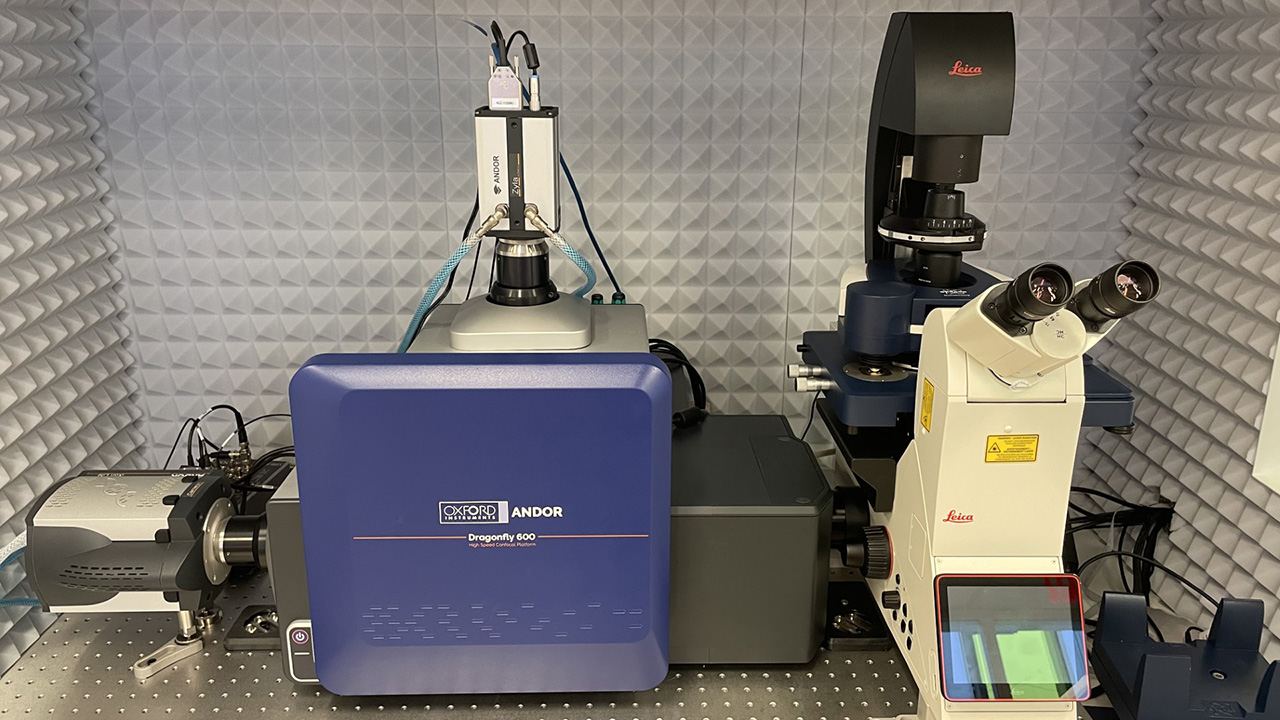
Bio-AFM

Our novel Bio-AFM setup employs Bruker JPK atomic force and Andor Dragonfly confocal fluorescence systems in tandem to produce powerful analyses of biological samples. The Bruker JPK system comes with three different AFM heads and several different scan modes. Experiments can be designed with focuses on speed, resolution, and sample dynamics. The Andor Dragonfly system includes several imaging methods, including a spinning disk confocal which decreases time required for data collection. Images taken with the Dragonfly can be overlaid onto the JPK scan area to collect AFM data on specific cells of interest.
Bruker JPK AFM
- NanoWizard V
- PeakForce-QI, PeakForce Tapping®, PeakForce QNM®, QI
- Single Molecule Force Spectroscopy (SMFS)
- Single Cell Force Spectroscopy (SCFS)
- DirectOverlay 2 for AFM in conjunction with advanced optical microscopy
- New software environment V8
- Features the latest ExperimentPlanner and ExperimentControl
- Accessories for high NA optics and AFM, environment control, FluidFM, and more
- NanoWizard UltraSpeed 2
- Single-molecule resolution
- Scans at 10 frames per second allow for video-rate imaging of cellular function and structural dynamics
- CellHesion 200
- Measure cell-cell, cell-tissue, and cell-substrate interactions with single-molecule sensitivity
Andor Dragonfly 600
- Spinning disk confocal
- Widefield
- DIC
- TIRF
- SRRF-Stream super resolution add-on
- iXon Back-Illuminated EMCCD camera
- Zyla sCMOS camera
- 25 and 40 micrometer pinhole options
- Imaris image post-processing software
- Leica DMi8 objective wheel with 10x, 20x, 63x, and 100x
Contacts
- Tai-De Li, Ph.D.
Director, Surface Science Facility
Research Associate Professor, Nanoscience Initiative
tli@gc.cuny.edu
Manufacturer / Model
Bruker / NanoWizard V, NanoWizard ULTRA Speed 2, CellHesion 200
Facility
Surface Science Facility
